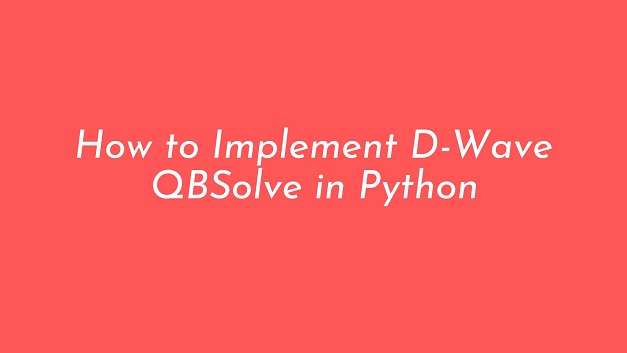Python has long been one of the most popular programming languages, with its simple syntax and a broad range of libraries making it perfect for a variety of tasks. It’s no surprise, then, that developers have also turned to Python to build applications using quantum computing. In this blog post, we’ll look at how to use the D-Wave QBSolve library in Python, so you can get started on developing your quantum applications.
Installing the Libraries
Before you can begin using D-Wave QBSolve in Python, you need to install the necessary libraries. Fortunately, this is easy! Just open up a terminal window and type:
pip install dwave_qbsolv
This will download and install D-Wave QBSolve as well as all its dependencies.
Setting Up Your Problem
Once you’ve installed the libraries, it’s time to set up your problem. One way to do this is by creating a dictionary that maps each qubit (a basic unit of information in quantum computing) to its corresponding value. For example:
qubit_dict = {
1: 0,
2: 1
}
# qubits 1 and 2 are set at their respective values 0 and 1
Once you’ve done that, you can create an instance of the QBSolv class by passing your qubit dictionary as an argument. This will give you an object with which you can start solving problems using quantum computing.
Solving Problems With Quantum Computing
Now that your problem is set up and your QBSolv instance created, you’re ready to start solving problems with quantum computing! The first step is to specify what type of problem you want to solve — either a minimization or maximization problem — by setting the problem_type argument when creating your QBSolv instance. Then pass in any additional parameters needed for your specific application (such as penalty factors or weights). Finally, call the solve() method on your QBSolv instance with appropriate arguments for it; this will return a solution for your problem as a NumPy array (and a penalty factor if applicable). That’s all there is to it!
Wrapping Up
Working with quantum computers can seem intimidating at first glance — but once you understand how it works and get used to writing programs like this one in Python, it doesn’t feel so difficult anymore. And who knows – maybe one day soon these kinds of applications might become commonplace in everyday life!
